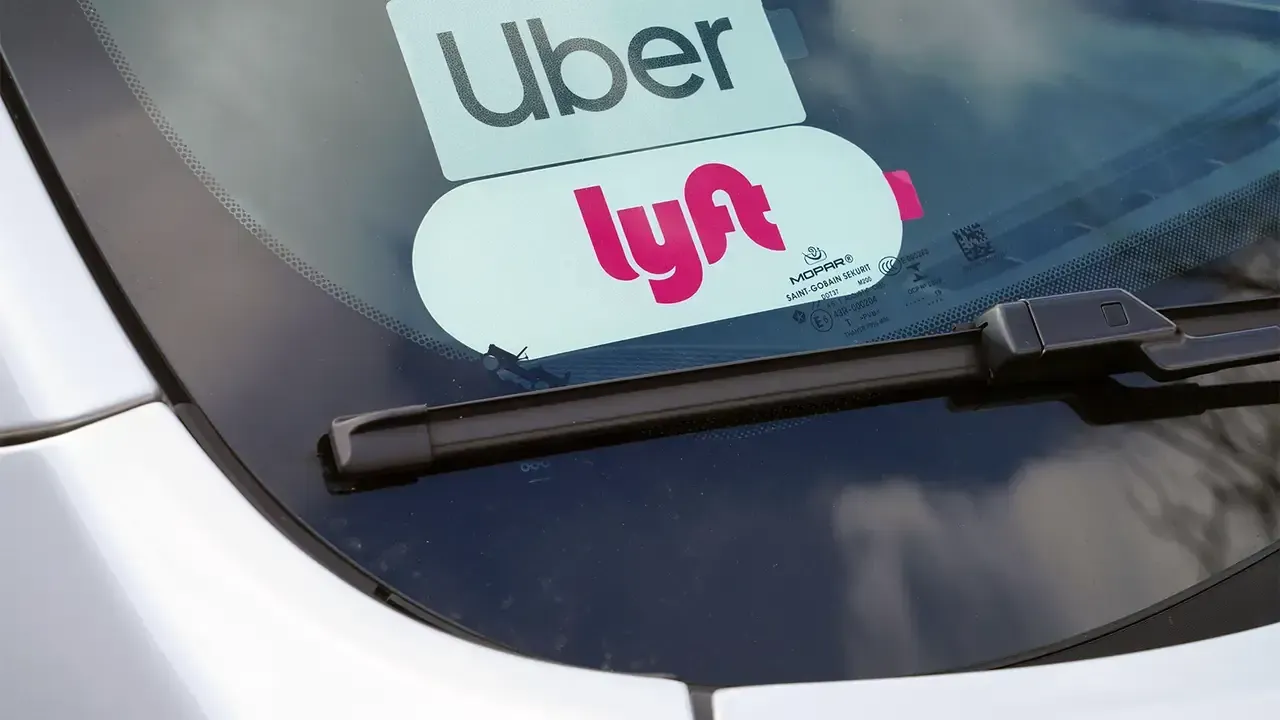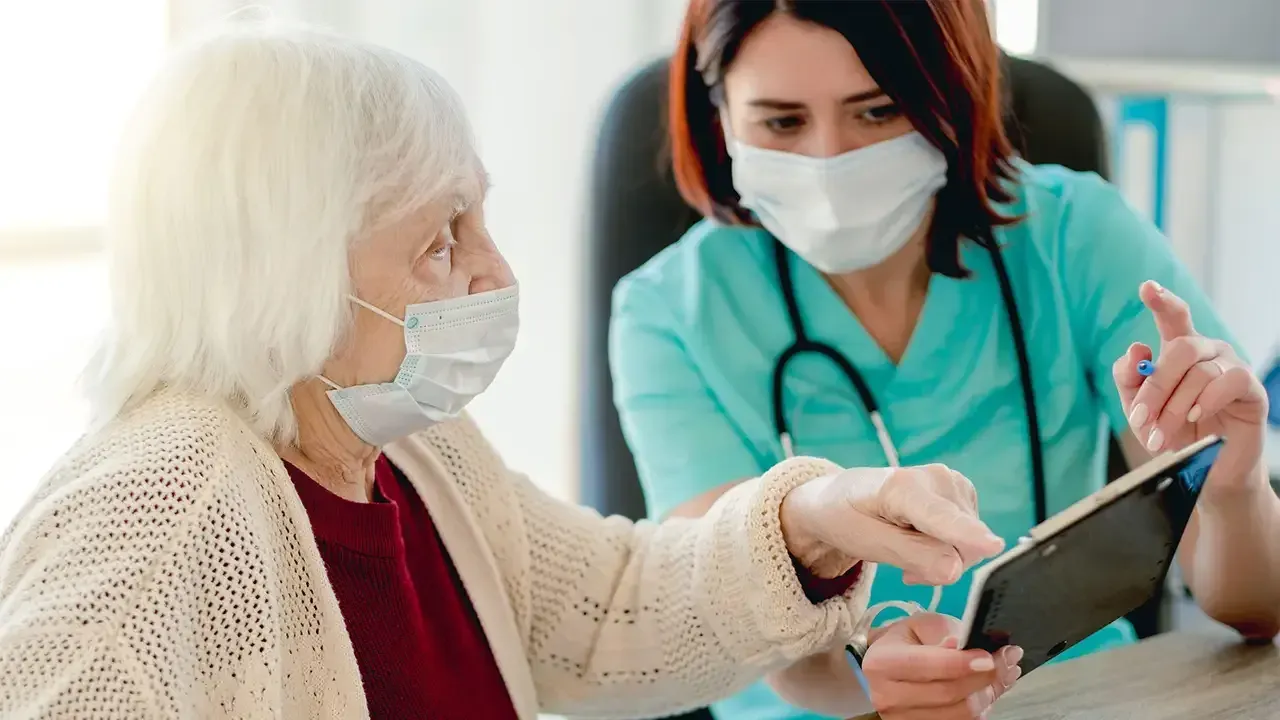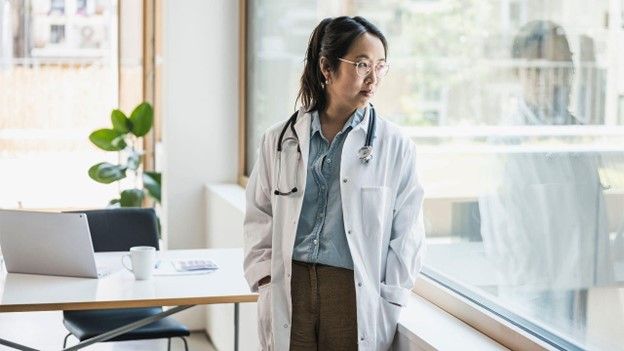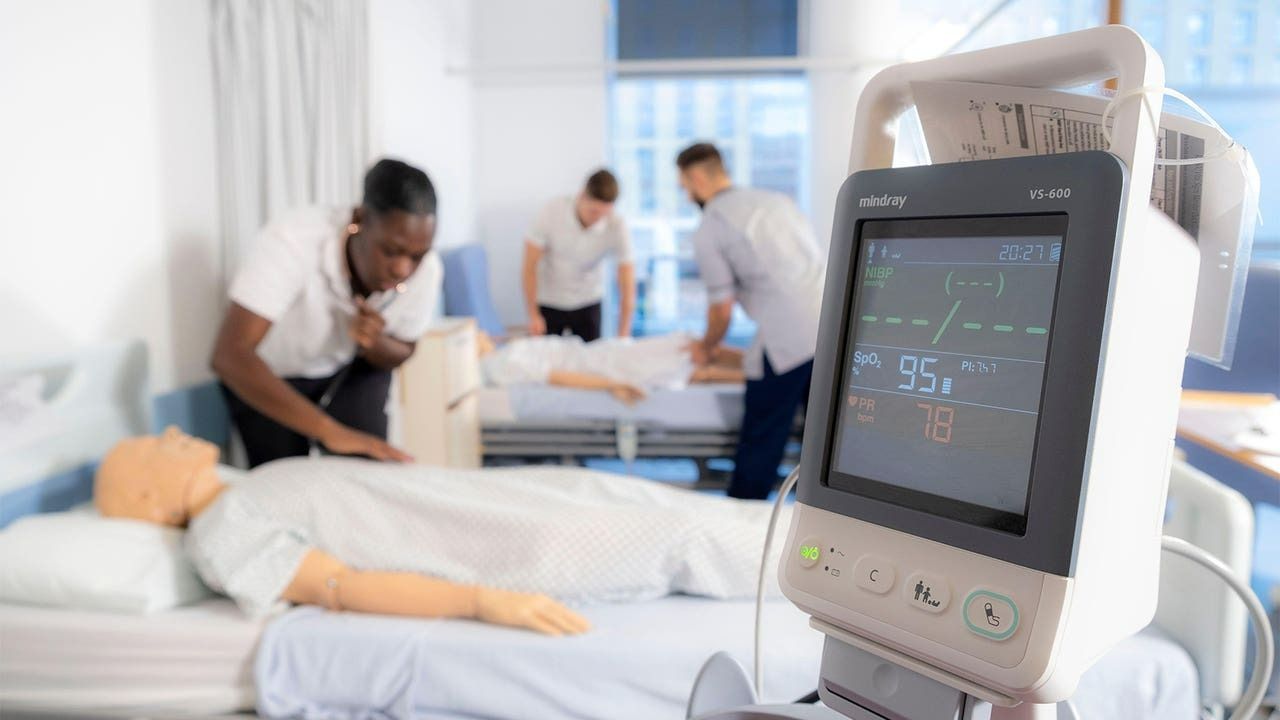Blog

Some are calling for states to subsidize the expensive trips for rural residents When Lyft driver Tramaine Carr transports seniors and sick patients to hospitals in Atlanta, she feels like both a friend and a social worker. "When the ride is an hour or an hour and a half of mostly freeway driving, people tend to tell you what they're going through," she said. Drivers such as Carr have become a critical part of the medical transportation system in Georgia, as well as in Washington, D.C. , Mississippi, Arizona , and elsewhere. While some patients use transportation companies solely dedicated to medical rides or non-emergency ambulance rides to get to their appointments, the San Francisco-based ride-hailing companies Uber and Lyft are also ferrying people to emergency rooms, kidney dialysis, cancer care, physical therapy, and other medical visits. But Georgia ride-hail drivers aren't only serving patients living in Atlanta or its sprawling suburbs. When rural Georgians are too sick to drive themselves, Uber or Lyft is often one of the only ways to reach medical care in the state capital. Rural hospital closures in Georgia have meant people battling cancer and other serious illnesses must now commute 2 or more hours to treatment facilities in Atlanta, said Bryan Miller, director of psychosocial support services at the Atlanta Cancer Care Foundation , a medical practice offshoot that seeks to alleviate financial burdens for cancer patients and their families. From April 2022 to April 2024, Lyft drivers completed thousands of rides that were greater than 50 miles each way and that began or ended at Atlanta-area medical treatment centers, including the Winship Cancer Institute of Emory University and Emory University Hospital Midtown, according to Lyft. While 75% of those trips were under 100 miles, the company said, 21% of them were between 100 and 200 miles and 4% were over 200, showing that even Georgians who live hours away from metro Atlanta rely on the ride-hail platform to reach medical care there. Uber Health global head Zachary Clark declined to provide comparable ridership data. Uber Health is a division of Uber that organizes medical transportation for some Medicaid and Medicare recipients, healthcare workers, prescription drug delivery, and others seeking reimbursement for medical-related Uber rides, according to Uber's website . Lyft also has a healthcare division, offering programs such as Lyft Assisted and Lyft Concierge to coordinate rides for patients. Nationwide, some insurance companies and cancer treatment centers, plus Medicare Advantage and state Medicaid plans, pay for such ride-hailing services, often with the goal of reducing missed appointments, according to Krisda Chaiyachati , MD, MPH, an adjunct assistant professor at the University of Pennsylvania medical school. In 2024, 36% of individual Medicare Advantage plans and 88% of special needs plans offered transportation services, said Jeannie Fuglesten Biniek , PhD, associate director of Medicare policy at KFF, the health policy research, polling, and news organization that includes KFF Health News. A special needs plan provides extra benefits to Medicare recipients who have severe and chronic diseases or certain other healthcare needs, or who also have Medicaid. And Medicaid -- the federal-state government safety net insurance plan for those with low incomes or disabilities -- paid for up to 4 million beneficiaries to use non-emergency medical transportation services annually from 2018 through 2021, according to an HHS report. Patients residing in rural areas used ride-hailing and other non-emergency transportation providers at the highest rates, the report said. The estimated total federal and state investment in non-emergency medical transportation was approximately $5 billion in 2019, according to a study by the Texas A&M University Transportation Institute. Even with some insurance covering trips or charities offering ride credits, social workers say, many ailing patients are still left without a ride. Nationwide, 21% of adults without access to a vehicle or public transit went without needed medical care in 2022, according to a study by the Robert Wood Johnson Foundation. People who lacked access to a vehicle but had access to public transit were less likely to skip needed care. The data analytics company Geotab ranked Atlanta as tied for second worst in the nation when it comes to the accessibility of its public transportation network. "The ability to get to a doctor's appointment can be a barrier to care," said Rochelle Schube, a cancer support group facilitator in Atlanta. "If I give a patient $250 in Uber cards and they live far away, that gets spent quickly." The fact that Uber and Lyft are harder to come by in rural America compounds the lack of medical access in those areas. "When you move to rural areas -- which you could argue have a higher need -- you see fewer services," Chaiyachati said. Finding drivers who are able and willing to provide medical transportation can be a challenge. The Atlanta-based start-up MedTrans Go connects patients and healthcare providers with vetted drivers, many offering wheelchair or stretcher rides, in Georgia and 16 other states. Many of its drivers have medical training, walk patients to and from medical facilities or their homes, and can handle complex situations for vulnerable patients, said Dana Weeks, the company's co-founder and CEO. The company's app can also dispatch directly to Uber or Lyft for patients who do not need specialized assistance, she said. Uber and Lyft trips can save patients and insurers money, costing a fraction of the typical fee for an ambulance ride, said David Slusky , PhD, an economics professor at the University of Kansas who has studied the impact of ride-hailing services on medicine. But instead of all of that, argued Timothy Crimmins , PhD, a history professor emeritus at Georgia State University and a former director of the school's neighborhood-studies center, the best solution would be for Georgia to expand Medicaid , so more rural hospitals would be able to remain open and Georgians could seek medical care close to home. The decision by Georgia lawmakers to not accept a federally funded expansion of Medicaid has left more than 1.4 million Georgians without health insurance, according to KFF -- and that hurts rural hospitals when those patients use the medical facilities and cannot pay their bills. In Georgia, 10 rural hospitals have either closed or ceased their inpatient care operations since 2010, according to a 2024 report from healthcare consultant Chartis, and 18 more are in danger of shuttering. Until more patients are insured, Crimmins said, the state should subsidize Uber and Lyft trips for less prosperous Georgians who need help reaching medical care in Atlanta. "We might be talking about $100 to $150 round-trip," he said. "That can be subsidized." Still, ferrying around patients is not for every ride-hail driver. Damian Durand said his Chevrolet Equinox SUV is large enough to accommodate a medical passenger requiring a wheelchair, but he isn't paid extra to transport those with medical needs. He said some of his recent passengers in Atlanta have been Medicaid recipients with mental health conditions or disabilities. "It can be stressful," he said. "I do feel like Uber and Lyft are trying to catch me off guard. When I can see that the ride is going to the hospital, I try to avoid or cancel the ride." While Durand's experience with medical transport has been mostly negative, Carr loves the work and appreciates being able to help older Georgians, who she said often tip her well. For her, ride-hail work remains a good option even when it entails medical calls. "It's not stressful for me," she said. "I worked a good 20 years in customer service. For me, human connection is important. I tried to work from home, and I really didn't like it. I prefer this because I can connect with people." KFF Health News is a national newsroom that produces in-depth journalism about health issues and is one of the core operating programs at KFF -- an independent source of health policy research, polling, and journalism. Learn more about KFF.

#homeaccessibility#homemodification#homehealthcare#aginginplace#aginggracefu lly#caregivers#disability#disabilityawareness#wheelchairuser#wheelchairacces sible#spinalcordinjury#physicallychallenged#safetyathome#elderlycare#graytsu nami#healthylifestyle#accessiblematters#userfriendlyhome "I can't tell my patients the truth any longer because they get upset, as if I were insulting them." This is what a colleague of mine said after his 85-year-old patient, whom I will call Kathy*, expressed dissatisfaction with the office visit. Attributing her knee pain to degenerative joint disease and explaining that this is a common occurrence "later in life" was apparently perceived as a slight. The x-ray report, clearly documenting the changes of arthritis, was not enough to satisfy Kathy who, reportedly, could not understand why her symptoms or condition should be attributed "just to old age." She was tired of hearing that so many of her ailments were part of the aging process. I'm not foreign to this type of interaction, where patients seem to reject that physical and cognitive decline are expected with aging. Perhaps they are just in profound denial regarding the effects of age. Although the aging process differs significantly from person to person, it seems disingenuous that our patients could believe that age will have little to no effect on their functional abilities. "No one wants to admit they're old," my colleague concluded. So, what's the best way to communicate with older adults about their age-related health conditions? Reconciling a History of Ageism With an Aging Population Society and nature are not kind toward elderly people. Ageism is a reality. Suffice to mention the recent dispute ignited by President Joe Biden's performance at the presidential debate with former President Donald Trump. Although some concerns were certainly legitimate, there is no doubt in my mind that the controversy was also spurred by the many prejudices against older adults. The term "ageism" was coined in 1969 by Robert Neil Butler, MD, to describe discrimination against seniors. In a society obsessed with youth and beauty, ageist beliefs against older adults are commonplace, leading to derogatory attitudes, rejection, and isolation. Long lives are our new normal, thanks in large part to modern medicine, with all the advancements in therapeutics and technology and improved living conditions. But long lives are not necessarily happy and fulfilling lives. A dear patient of mine, who was in her mid-80s and lived at home with her 93-year-old husband, always used to say, "The Golden Age is not so golden." The optimistic scenarios of pro-aging writers, although inspiring, often don't account for the progressive and unpredictable nature of human frailty. Aging is a complex biological process caused by many co-conspirators: nuclear and mitochondrial DNA damage, progressive telomere shortening, defective DNA repair pathways, and cellular senescence, leading to unavoidable tissue and organ atrophy, with resulting loss of function. Many factors, including lifestyle, can have a positive or negative impact on biological aging. But the bottom line is that the depredation of age cannot be avoided, unless people die young. Help Patients Navigate, Not Deny, Their Age How can we reconcile our desire to live longer with the challenges brought on by aging and by society's treatment of older people? Between the threat of ageism on one hand and the many betrayals of the golden years on the other, is anyone surprised that some people might oppose the suggestion that they are losing physical and cognitive capabilities due to old age? I am not anymore. I used to be puzzled by what I perceived to be a lack of common sense, a form of unreasonable denial, and a bold disregard for the truth despite all the available evidence. I'm not puzzled any longer. I am concerned. I have seen too many of my patients, including family members, launching into exhausting and wasteful quests to find answers to their ailments that do not include the word "age." Being labeled with a specific disease seems to provide some people with a more palatable and more socially acceptable excuse for their decline. "They will keep on changing doctors until they hear what they want to hear," another colleague commented when his 84-year-old patient consulted several neurologists to find the answer to his declining motor skills. Eventually, an expert in the field told him that although nothing was found on physical exam, "You might have a mild case of Parkinson's disease. If you feel like the medications help you, take them." Aging wasn't mentioned at any point in time during the office visit. The problem is that, far from providing psychological relief, these alternative diagnoses might eventually result in more anxiety and depression, an endless sequence of time-consuming tests and doctors' appointments, hence a diminished quality of life, not to mention escalating medical costs. These "maybe" diagnoses, made with a cavalier attitude, might even prompt families to push their loved ones toward alternative living arrangements and nursing home placement, and not always in good faith. Family dynamics and societal expectations are very complex. A neurodegenerative disorder might be seen as a socially more acceptable reason to put "pops" away than just old age. We should never forget that we are our patients' best advocates. This requires an honest and objective assessment of our aging patients, and frank, realistic conversations with both the patients and their families. Aging can be a messy business and there is not a lot of grace in it. People can choose to ignore it and look for answers elsewhere, but we, as physicians, should not become part of the problem. Fueling the denial comes at a great cost to our patients and society. Let us instead help our patients navigate older age with sound medical advice and great compassion. *Patient's name has been changed for confidentiality. Fabrizia Faustinella, MD, PhD, is an internist and faculty member at Baylor College of Medicine in Houston. She is also a Doctors for America A. Gene Copello health advocacy fellow.







